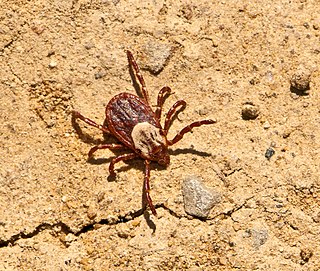
Fußball-Club Bayern München e. V., also known as FC Bayern, Bayern Munich, or simply Bayern, is a German professional sports club based in Munich, Bavaria. It is best known for its professional men's association football team, which plays in the Bundesliga, the top tier of the German football league system. Bayern is the most successful club in German football history, having won a record 33 national titles, including 11 consecutively since 2013, and 20 national cups, along with numerous European honours.

Klaus Schulze was a German electronic music pioneer, composer and musician. He also used the alias Richard Wahnfried and was a member of the Krautrock bands Tangerine Dream, Ash Ra Tempel, and The Cosmic Jokers before launching a solo career consisting of more than 60 albums released across six decades.

Best Buy Co. Inc. is an American multinational consumer electronics retailer headquartered in Richfield, Minnesota. Originally founded by Richard M. Schulze and James Wheeler in 1966 as an audio specialty store called Sound of Music, it was rebranded under its current name with an emphasis on consumer electronics in 1983.
The Schulze method is an electoral system developed in 1997 by Markus Schulze that selects a single winner using votes that express preferences. The method can also be used to create a sorted list of winners. The Schulze method is also known as Schwartz Sequential dropping (SSD), cloneproof Schwartz sequential dropping (CSSD), the beatpath method, beatpath winner, path voting, and path winner. The Schulze method is a Condorcet method, which means that if there is a candidate who is preferred by a majority over every other candidate in pairwise comparisons, then this candidate will be the winner when the Schulze method is applied.

Heinz Harro Max Wilhelm Georg Schulze-Boysen was a left-wing German publicist and Luftwaffe officer during World War II. As a young man, Schulze-Boysen grew up in prosperous family with two siblings, with an extended family who were aristocrats. After spending his early schooling at the Heinrich-von-Kleist Gymnasium and his summers in Sweden, he part completed a political science course at the University of Freiburg, before moving to Berlin on November 1929, to study law at the Humboldt University of Berlin. At Humboldt he became an anti-nazi. After a visit to France in 1931, he moved to the political left. When he returned, he became a publicist on the "Der Gegner", a left-leaning political magazine. In May 1932, he took control of the magazine, renamed as the "Gegner" but it was closed by the Gestapo in February 1933.

Richard Taylor "Dick" Schulze is an American businessman and politician who served as a member of the U.S. House of Representatives from 1975 to 1993. His district encompassed portions of Montgomery, Delaware, and Chester Counties in the western Philadelphia suburbs.

Ixodes is a genus of hard-bodied ticks. It includes important disease vectors of animals and humans, and some species inject toxins that can cause paralysis. Some ticks in this genus may transmit the pathogenic bacterium Borrelia burgdorferi responsible for causing Lyme disease. Additional organisms that may be transmitted by Ixodes are parasites from the genus Babesia, which cause babesiosis, and bacteria from the related genus Anaplasma, which cause anaplasmosis.

The Minuets in G major and G minor, BWV Anh. 114 and 115, are a pair of movements from a suite for harpsichord by Christian Petzold, which, through their appearance in the 1725 Notebook for Anna Magdalena Bach, used to be attributed to Johann Sebastian Bach. These minuets, which are suitable for beginners on the piano, are among the best known pieces of music literature. The 1965 pop song "A Lover's Concerto", of which millions of copies were sold, is based on the first of these Minuets.

Homosclerophorida is an order of marine sponges. It is the only order in the monotypic class Homoscleromorpha. The order is composed of two families: Plakinidae and Oscarellidae.

Plakinidae is a family of marine sponges. It is composed of seven genera:

Dermacentor is a genus of ticks in the family Ixodidae, the hard ticks. The genus has a cosmopolitan distribution, with native species on all continents except Australia. Most are found in North America.
Cosmopterix trilopha is a moth species of the family Cosmopterigidae which was first described in 1922 by Edward Meyrick. Its type locality is in Uganda; the species is additionally known from Malawi, Kenya and Ethiopia.
Corticium diamantense is a species of sea sponge in the order Homosclerophorida, first found in vertical walls of reef caves at depths of about 23 to 28 metres in the Caribbean Sea. This species has oscula situated near its border; regular non-lophose calthrops of one size, rare tetralophose calthrops and candelabra, the fourth actine of which is basally ramified into 4 or 5 microspined rays.
Plakortis dariae is a species of sea sponge in the order Homosclerophorida, first found in vertical walls of reef caves at depths of about 23 to 28 metres in the Caribbean Sea. This species has diods of two different categories: it possesses large ones and small, rare, irregular, curved ones, which are often deformed with one of its ends being blunt ; triods are rare and regular.

Euplectellidae is a family of glass sponges (Hexactinellids) belonging to the order Lyssacinosa, first represented in the Ordovician fossil record, substantially older than molecular estimates of the clade's age.

Svenja Schulze is a German politician of the Social Democratic Party (SPD). She serves as Minister for Economic Cooperation and Development in the cabinet of Olaf Scholz. Schulze has been serving as member of the German Bundestag since 2021, representing North Rhine-Westphalia.
Berthella ocellata is a species of sea slug, a marine gastropod mollusc in the family Pleurobranchidae. It is native to the eastern Atlantic Ocean and the Mediterranean Sea where it inhabits the shallow sublittoral zone.

Klaus-Peter Schulze is a German politician. Born in Döbern, Brandenburg, he represents the CDU. Klaus-Peter Schulze has served as a member of the Bundestag from the state of Brandenburg from 2013 to October 2021.

Plakortis is a genus of marine sponges in the order Homosclerophorida, first described by Franz Eilhard Schulze in 1880.
Serruria trilopha, the trident spiderbush, is a flowering shrub that belongs to the genus Serruria and forms part of the fynbos. The plant is endemic to the Western Cape, where it only occurs on the Cape Peninsula and Cape Flats up to Malmesbury. The shrub is upright and grows only 80 cm high and bears flowers from August to October.












